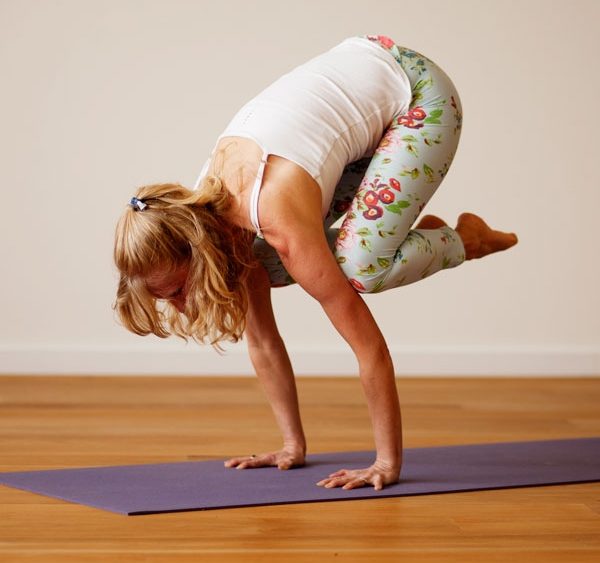– It seems like the online yoga community has a real thing for arm balances… and why not? Arm balances are fun, they get your adrenaline pumping and challenge you on both a physical and mental level.
So if you want to start practising arm balances here are four essential ingredients you need before you start.
1. Strong Arms
It’s probably the most obvious point but to balance on your hands or forearms you need to have enough strength in the wrists, arms and shoulders first. Build up this by practising Chaturanga Dandasana, Downward Facing Dog, Plank and Dolphin. Make sure you’re warmed up first. You can do some rolling of the joints or Pawanmuktasana for your wrists before you start. Then practise 5 – 10 Sun Salutations. Each time hold Plank position for a few breaths and move very slowly down to Chaturanga. Next, hold Downward Facing Dog and Dolphin for up to two minutes each. This is also really good preparation for Headstand.
EkhartYoga members: Try Esther’s short practice for building strength in your arms.
2. Strong Core
Working on core strength will give you the buoyancy and lift you need for arm balances, as well as help to increase your stability in the pose. Try holding a block between your upper thighs while staying for a few breaths in Boat Pose / Navasana, Forearm Plank and Chair Pose / Utkatasana. This can help you activate the Deep Front Line as well working on core abdominal muscles. Keep your belly pulled in towards the spine and up and keep breathing!
3. Flexibility – Open Hips
As well as strength you also need flexibility and openness in the joints for arm balances. What needs to be open will depend on the pose. For example, many arm balances such as Bakasana call for flexibility in the lower back and hips for the deep forward bend/ hip flexion aspect. Practise squats – Garland Pose / Malasana – to work on hip flexion. It is essentially the same as Crow Pose but with your feet on the ground so is a great preparation for giving you a feeling of the final pose. If you are working on increasing flexibility in the hips try holding poses like Pigeon or Butterfly Pose for five minutes. Watch what is happening with your jaw, it can often become tense when we are working hard on the hips.
EkhartYoga members: Practise Malasana and other hip opening poses in this class with Sandra Carson.
4. Adventurous Mindset
One of the biggest obstacles to practising arm balances at first is fear. It’s understandable of course when the risk of falling flat on your face isn’t just a metaphor! Putting a cushion in front of your face can take away some of that fear of falling when you are trying out poses like Crow. However, what also makes arm balances (and falling out of them) easier is relaxation and release in the body, not gritting your teeth and tensing up. So use your arm balances as a way to practice non-attachment to the outcome. Be curious about the pose and see what happens. As David Lurey says “Practice ‘leaning into your edges’ with challenging poses to build a more open attitude to face life’s “arm balance poses” of constant change and variations of expectations.”
EkhartYoga members: Practise this with David in his class – Fly High! Land Soft…Arm Balances
We’ve covered all these key elements in our Arm Balance Essentials programme. Something for all levels!

